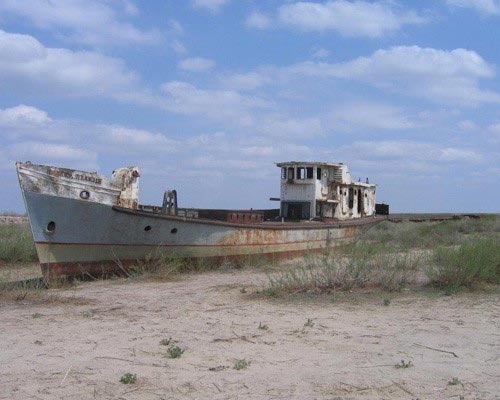Bone dry
One of the problems with having a population as large as 6 billion people (and rising) is that it takes a lot of water to keep everything running. We use water to drink, make food, create energy, manufacture products, extract raw minerals from the Earth and everything else in between.
 The average family of four can use 400 gallons of indoor water or more every day, to say nothing of the massive quantities of water used by businesses, farms and industry. The driver of our civilization, electricity, is generated by turbines using massive amounts of water; about half of the total water use in the U.S. is by power plants.
The average family of four can use 400 gallons of indoor water or more every day, to say nothing of the massive quantities of water used by businesses, farms and industry. The driver of our civilization, electricity, is generated by turbines using massive amounts of water; about half of the total water use in the U.S. is by power plants.
All that water has to come from somewhere, and it shouldn’t be surprising to learn that there are a lot of places around the world that are literally drying up (like the Aral Sea, seen here). It’s never been harder to be a large body of water. In the face of warming temperatures caused by climate change on top of the strong and increased demand placed on supply by human needs, some of the world’s largest lakes, rivers and seas are growing smaller with every season.
When we use more water than is naturally put back into the system, we draw down the overall supply. That simple equation is the brutal reality for seven of the following dried up lakes, rivers and seas.
Source: http://www.mnn.com
Dear User/Visitor! Please, answer on our questions: tick off one of the positions – your answer will make us able to improve our site and make it more interesting and useful!

